Quality Control Processes
Quality control processes for flat steel are critical tests performed to ensure the product’s compliance and durability. Two main categories, mechanical analysis and chemical analysis, are the most important components of these processes. Both types of analysis are necessary to determine the quality of the flat steel and check its conformity to standards.
Mechanical Analysis
Mechanical analysis tests the physical properties of flat steel. These tests aim to measure the steel’s durability, hardness, flexibility, and other mechanical properties. One of the significant and common mechanical tests, the Tensile Test, is applied at the Gökmetal production facilities using a 30-ton tensile testing device.
Tensile Test: Also known as the stress test, it determines the tensile strength and elongation capacity of the steel. This test shows how much the material can stretch and how much load it can carry.
How is it done? A controlled tension is applied to a sample under a specific load until a certain level or until the material breaks. This is a destructive engineering and material science test performed to determine the behavior of the sample.
It is used to find out how strong a material is and how much it can elongate before breaking. This test method is used to determine yield strength, ultimate tensile strength, ductility, strain hardening characteristics, Young’s modulus, and Poisson’s ratio.
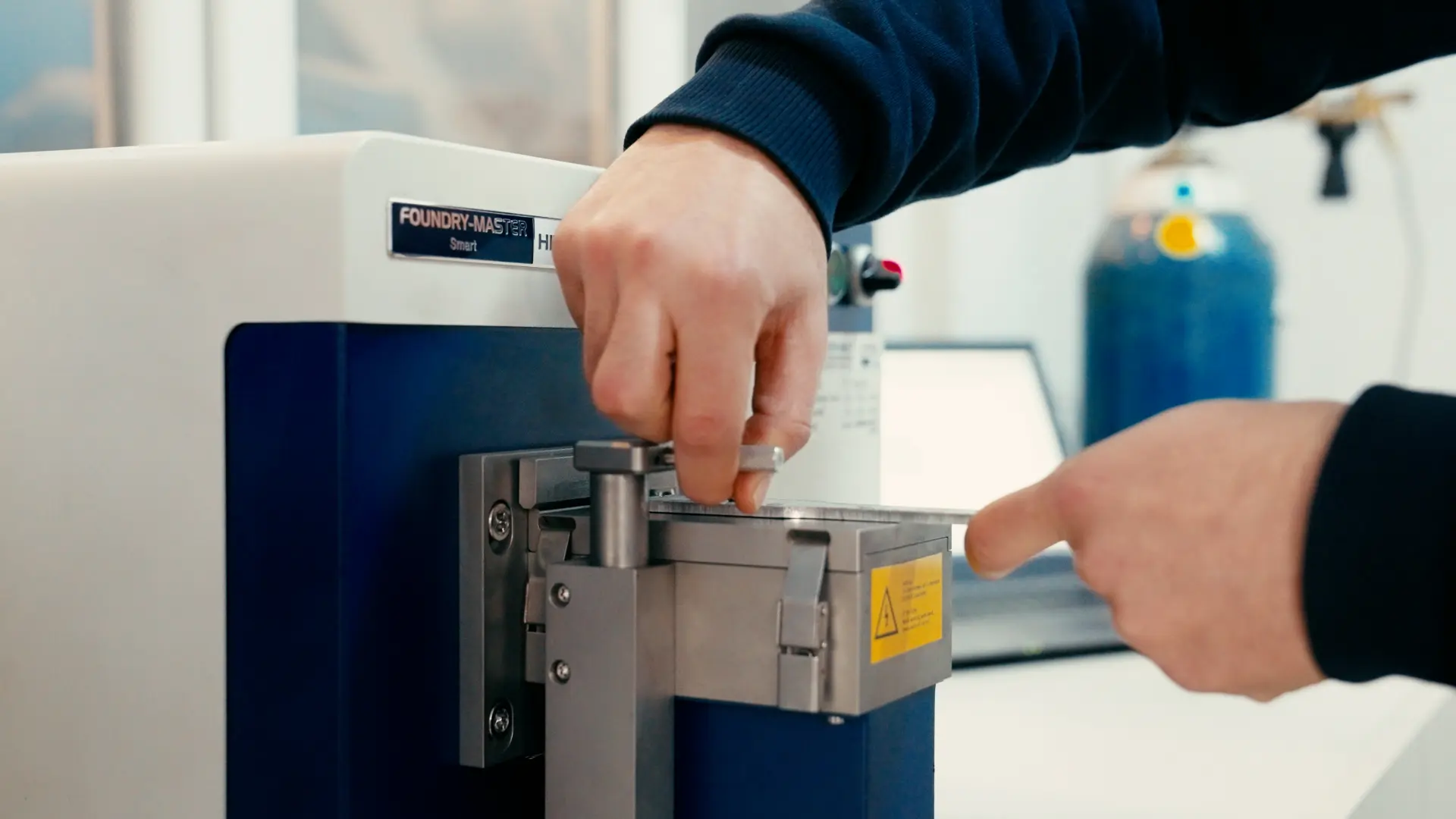
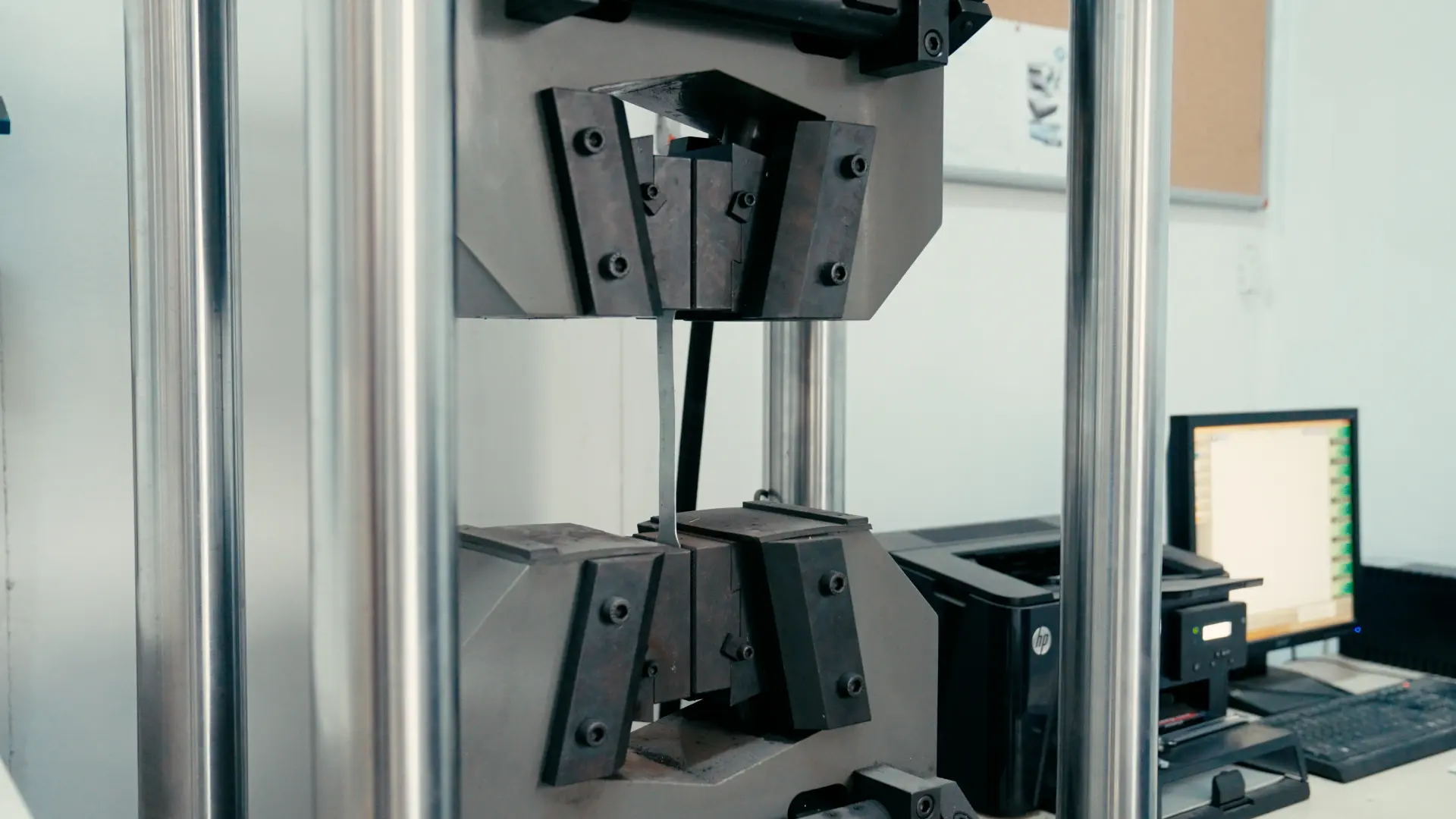
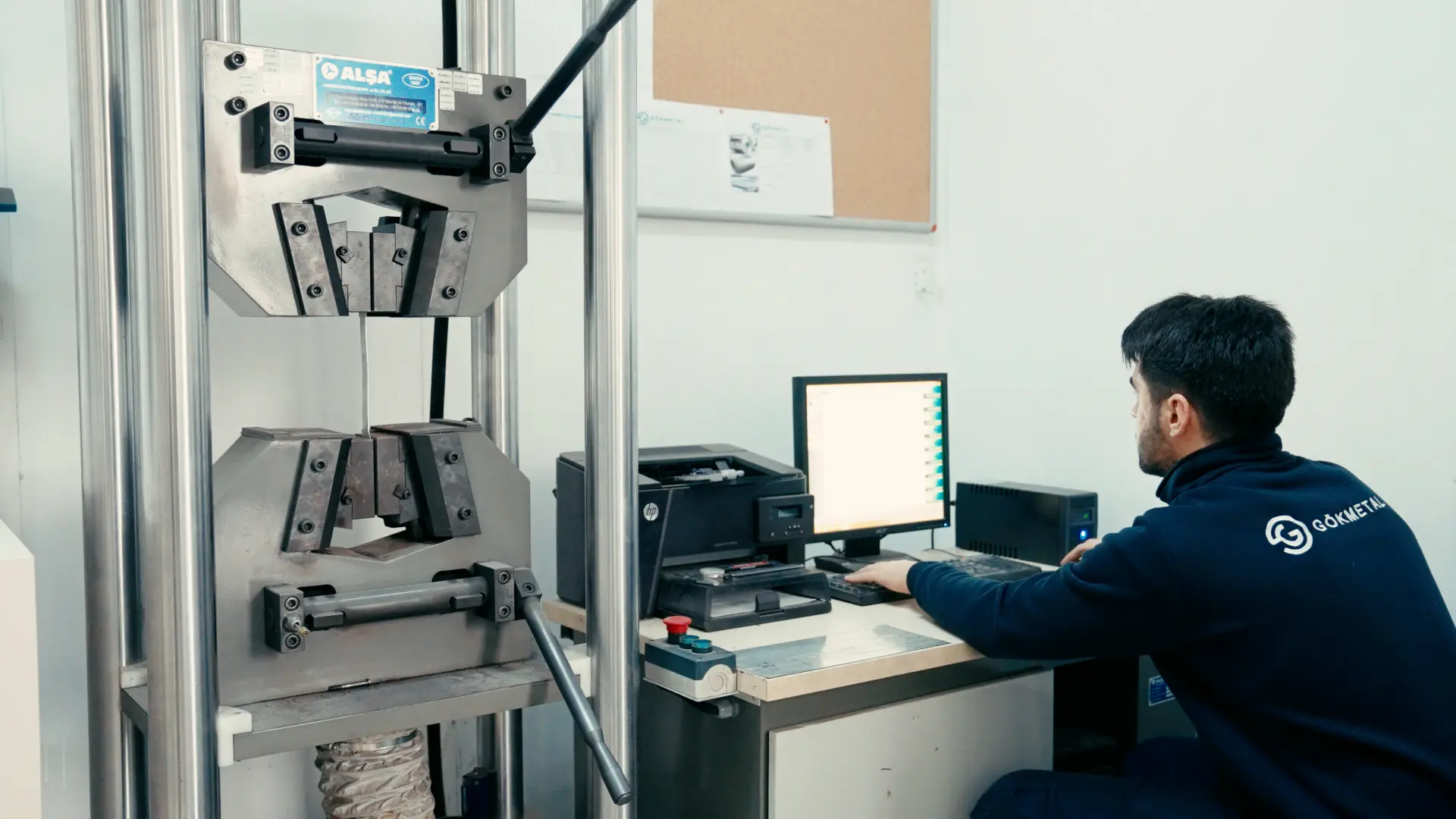
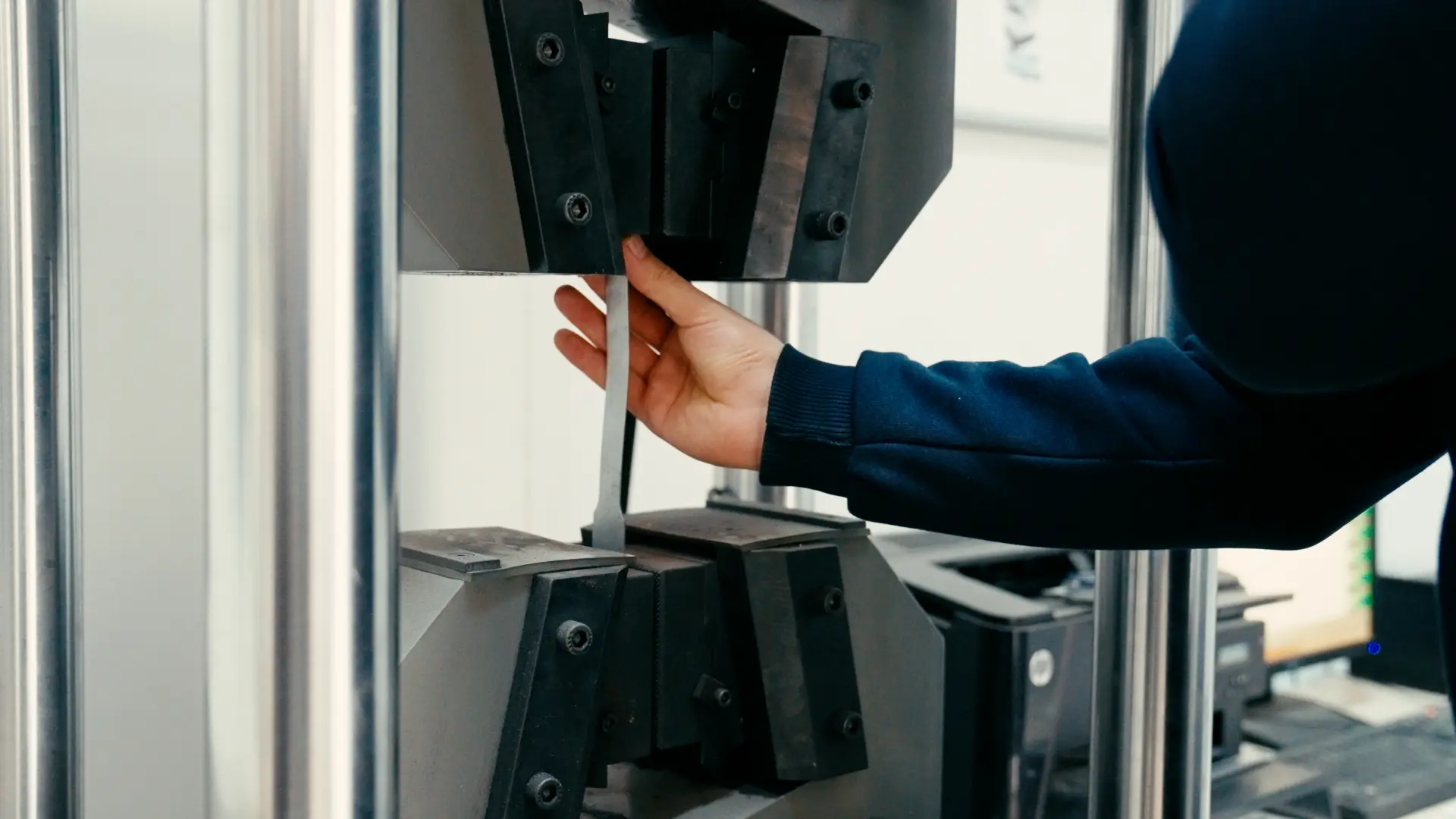
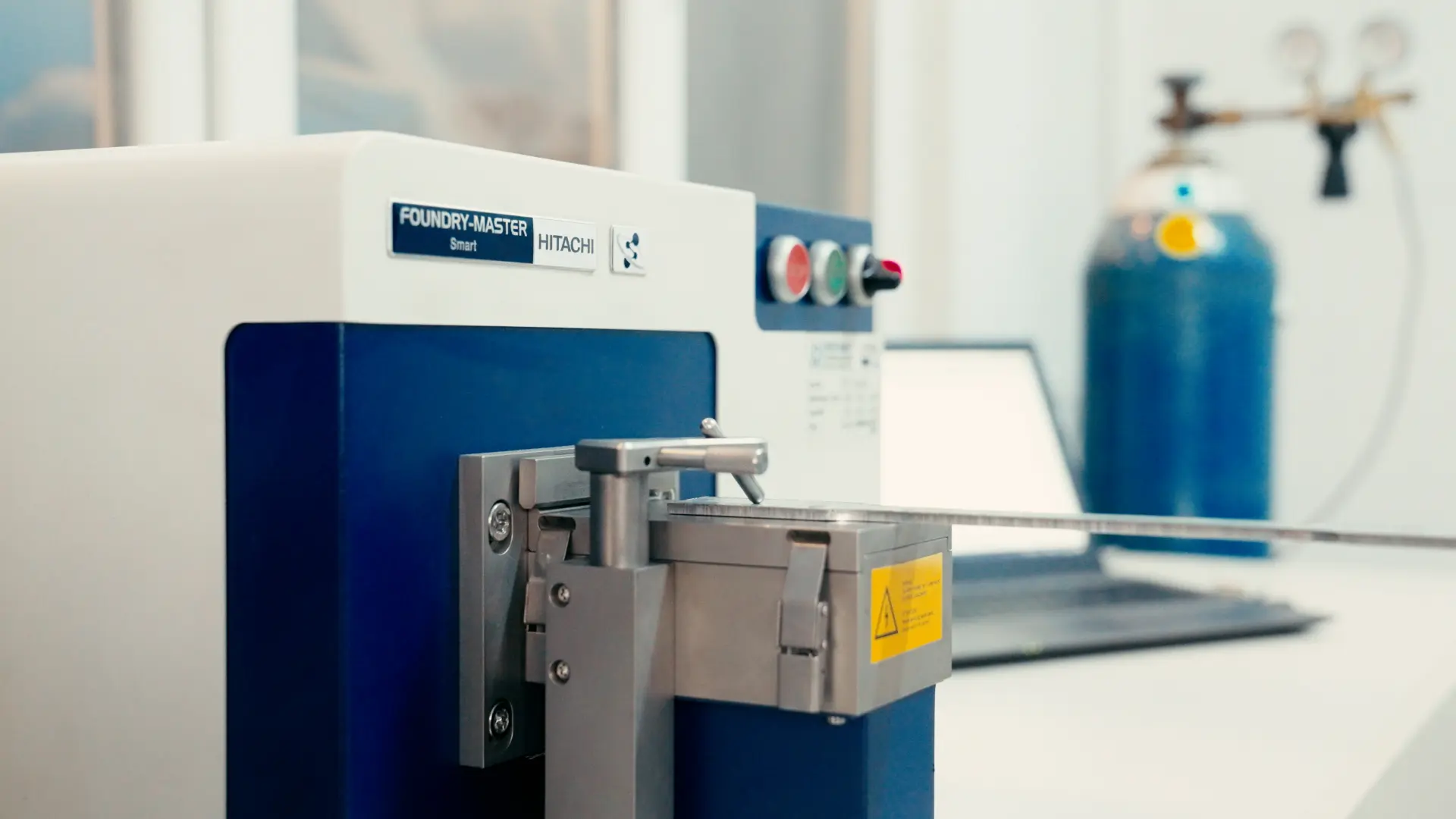
Chemical Analysis
Chemical analysis is the process of examining the chemical composition of flat steel. This analysis measures the ratios of alloying elements and chemical compounds within the steel. One of the important and common chemical analyses, Optical Emission Spectroscopy, is applied at the Gökmetal production facilities.
Optical Emission Spectroscopy (OES): It is a high-precision method for determining the chemical structure of steel. It is commonly used for analyzing metals.
Gökmetal uses Optical Emission Spectrometer to detect the elements contained in the material and their densities.
This information is used to control the quality of the material, analyze its composition, monitor metallurgical processes, and ensure the characterization of materials used in industrial production.
Both analyses are fundamental elements in the production and quality control of flat steel. Mechanical analysis ensures the physical strength and application safety of the steel, while chemical analysis checks the composition of the steel and guarantees that the desired properties are achieved. Each of these quality control processes optimizes the performance, durability, and safety of the final product.
The purpose of the laboratories where we control these quality control processes is to maximize customer satisfaction and ensure that the right product meets the right customer.